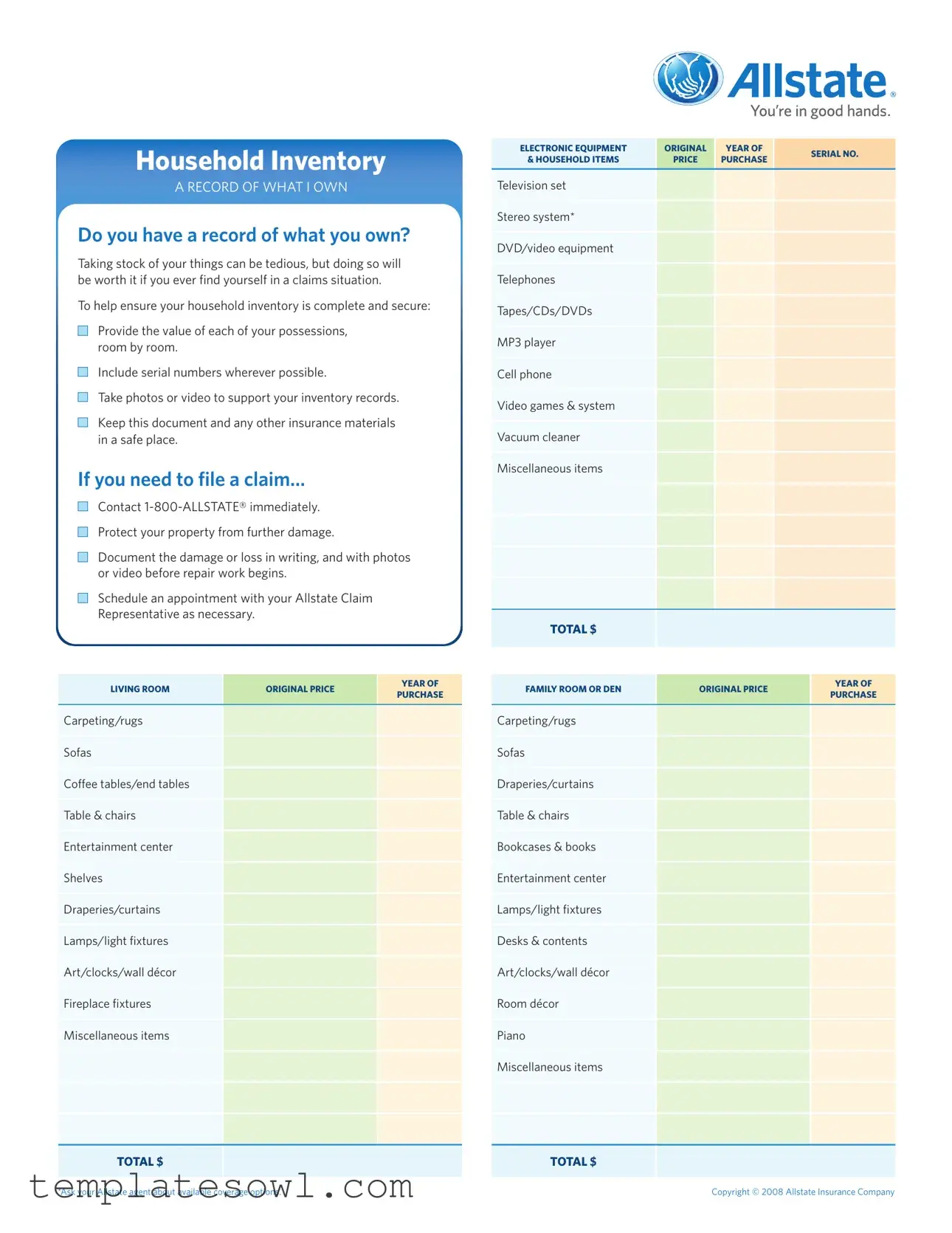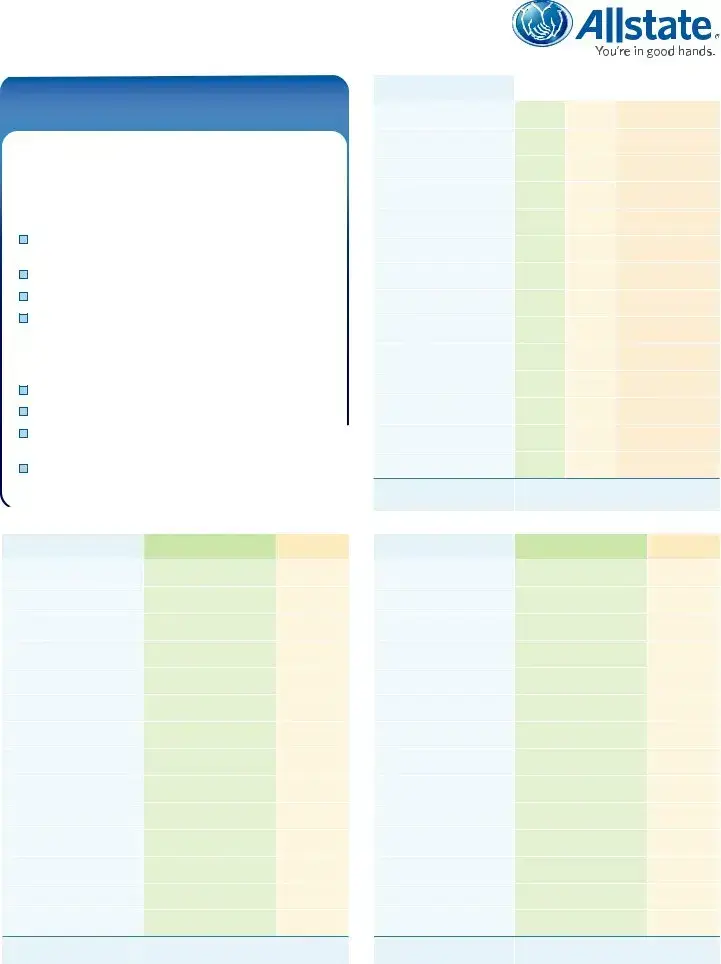What is the purpose of the Allstate Inventory form?
The Allstate Inventory form serves as a detailed record of your personal belongings. Creating a comprehensive inventory is crucial for insurance purposes, especially when filing a claim. By documenting the value, condition, and any serial numbers of your possessions, you can streamline the claims process and ensure that you receive the compensation you deserve in case of theft, damage, or loss. This form encourages organization, helping you keep track of your items room by room, which can make life easier in times of distress.
How do I use the Allstate Inventory form effectively?
To use the Allstate Inventory form effectively, start by listing your possessions in each room. Note details such as the original price, year of purchase, and serial numbers when applicable. Take photographs or videos of your items to provide visual evidence that complements your written records. Be thorough—don't overlook small items, as they can add up. Once completed, keep this document in a safe place, along with your insurance policies, so it can be accessed easily when needed.
What should I do if I need to file a claim?
If you find yourself in a situation where you need to file a claim, act quickly. Contact Allstate immediately at 1-800-ALLSTATE® to initiate the process. Protect your property from any further damage and document the loss in writing and through photos or video before beginning repairs. After reporting the loss, you can schedule an appointment with your Allstate Claim Representative who will assist you through the claims process, ensuring that you understand every step along the way.
Why is it important to keep an updated inventory?
Keeping an updated inventory is essential for several reasons. First, as you acquire new items or dispose of old ones, your inventory reflects your current possessions, ensuring that your insurance coverage remains adequate. Regular updates can also help you remember the value of your belongings, which is beneficial not just for insurance but also for personal financial assessments. Moreover, in the event of a disaster or theft, having an up-to-date inventory allows for a smoother and quicker claims process, minimizing stress during an already difficult time.




